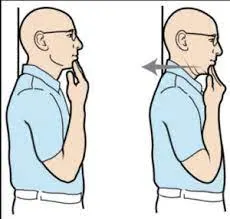Imagine a day when even the simplest tasks such as lifting a cup, or typing on a keyboard become almost impossible to do. Thoracic Outlet Syndrome (TOS) has the uncanny ability to turn such everyday tasks into painful activities. While this condition can be daunting, not all hope is lost. With the help of physical therapy, you can deal with Thoracic Outlet Syndrome and strive toward an improved quality of life. In this blog, we’ll explore how physical therapy plays a pivotal role in the management and treatment of TOS.
Contents
Understanding Thoracic Outlet Syndrome
Thoracic Outlet Syndrome, often abbreviated as TOS, is a complex medical condition that can significantly impact one’s quality of life. It’s characterized by the compression or irritation of nerves or blood vessels as they pass through the narrow space known as the thoracic outlet, situated between the collarbone (clavicle) and the first rib. This intricate anatomical region houses critical structures, including the brachial plexus (a network of nerves) and the subclavian vessels (artery and vein), making it susceptible to various forms of compression.
Types of TOS: TOS isn’t a one-size-fits-all condition; rather, it encompasses several distinct types:
- Neurogenic TOS: This form primarily involves compression of the brachial plexus, leading to symptoms like pain, numbness, tingling, and weakness in the neck, shoulder, and arm.
- Vascular TOS: Here, the compression affects the subclavian artery or vein, potentially leading to blood circulation issues, clot formation, or even arm swelling and discoloration.
- Mixed TOS: As the name suggests, mixed TOS involves a combination of both neurogenic and vascular components, presenting a complex clinical picture.
Causes and Risk Factors: Understanding what triggers TOS is essential. It can result from various factors, including:
- Anatomical Variations: Some individuals may have congenital or acquired structural anomalies in the thoracic outlet that predispose them to TOS.
- Repetitive Movements: Jobs or activities that require repetitive arm movements or overhead work can increase the risk of developing TOS.
- Trauma or Injury: Accidents, such as car accidents or falls, can damage the structures in the thoracic outlet, leading to TOS.
- Poor Posture: Maintaining poor posture, especially while working at a desk or using electronic devices for extended periods, can contribute to TOS development.
- Underlying Medical Conditions: Conditions like cervical rib, obesity, and previous chest surgeries can also raise the risk of TOS.
Role Of Physical Therapy in Thoracic Outlet Syndrome Management
Through tailored exercises, education, and specialized techniques, physical therapists play a pivotal role in helping individuals alleviate pain, improve function, and regain their quality of life. Let’s delve into the vital role of physical therapy in thoracic outlet syndrome management.
- Assessment and Diagnosis: Physical therapists begin by conducting a thorough evaluation to assess the type and severity of TOS. This assessment helps in crafting a personalized treatment plan that addresses the individual’s specific needs.
- Pain Management: One of the primary goals of physical therapy for TOS is to alleviate pain. Physical therapists employ various techniques, such as manual therapy, modalities like heat or cold therapy, and gentle exercises, to reduce discomfort and inflammation.
- Strengthening Muscles: Weak muscles can exacerbate TOS symptoms. Physical therapy includes targeted exercises designed to strengthen the muscles around the thoracic outlet. This added strength can help support and stabilize the area, reducing compression.
- Posture Improvement: Poor posture often contributes to TOS. Physical therapists focus on correcting posture issues through exercises and ergonomic education. By teaching proper body mechanics, they help individuals reduce strain on the thoracic outlet.
- Gradual Progression: As individuals progress in their TOS management, physical therapists adjust the treatment plan accordingly. This ensures that the rehabilitation process aligns with the individual’s recovery milestones.
- Empowerment and Self-Care: Physical therapy empowers individuals to take an active role in their TOS management. Through education and guidance, patients learn self-care techniques, exercises, and lifestyle adjustments that contribute to long-term relief.
- Surgery Avoidance: In many cases, physical therapy can help individuals avoid surgery. By addressing the underlying causes and strengthening the affected area, surgery may become unnecessary.
- Holistic Approach: Physical therapy offers a holistic approach to TOS management. It considers the individual’s overall well-being, addressing not only the physical symptoms but also the emotional and psychological aspects of living with TOS.
Exercises For Thoracic Outlet Syndrome
Here are some exercises that may help alleviate TOS symptoms:
Scalene Stretch
- Sit or stand with your back straight.
- Reach your right hand behind your back and hold onto a sturdy object.
- Tilt your head to the left, bringing your left ear towards your left shoulder.
- Hold for 20-30 seconds and repeat on the other side.
- Perform this stretch 2-3 times on each side.
Shoulder Blade Squeeze
- Sit or stand with your arms at your sides.
- Squeeze your shoulder blades together, as if you’re trying to hold a pencil between them.
- Hold for 5-10 seconds, then release.
- Repeat this exercise 10-15 times.
Pectoral Stretch
- Stand in a doorway with your elbows bent at a 90-degree angle.
- Place your forearms on the doorframe and step forward slightly.
- You should feel a stretch in your chest.
- Hold for 20-30 seconds and repeat 2-3 times.
Chin Tucks
- Sit or stand with your back straight.
- Gently tuck your chin in towards your chest, as if you’re making a double chin.
- Hold for 5-10 seconds, then relax.
- Repeat this exercise 10-15 times.
Thoracic Extension
- Sit on a stability ball or a chair with no backrest.
- Place your hands behind your head, elbows pointing out.
- Gently arch your upper back over the ball or chair, looking upward.
- Hold for 5-10 seconds, then return to the starting position.
- Repeat this exercise 10-15 times.
Scapular Retraction
- Sit or stand with your arms at your sides.
- Squeeze your shoulder blades together while keeping your arms relaxed.
- Hold for 5-10 seconds, then relax.
- Repeat this exercise 10-15 times.
Thoracic Mobility Exercises
- Consult with a physical therapist for specific thoracic mobility exercises that can help improve the flexibility and range of motion in your upper back.
Deep Breathing Exercises
- Practice diaphragmatic breathing to improve lung function and reduce tension in the thoracic outlet.
Treatment Options For Thoracic Outlet Syndrome 
Thoracic Outlet Syndrome (TOS) is a multifaceted condition that requires a tailored approach to treatment. Depending on the type and severity of TOS, various treatment options are available to alleviate symptoms and improve the individual’s quality of life. Here’s a comprehensive overview of TOS treatments:
Medications: Nonsteroidal Anti-Inflammatory Drugs (NSAIDs) can help reduce pain and inflammation associated with TOS. In some cases, muscle relaxants may be prescribed to alleviate muscle spasms contributing to TOS symptoms.
- Lifestyle Modifications: Adjusting workstations and daily activities to promote proper posture and minimize repetitive movements can significantly reduce TOS symptoms. Identifying and avoiding activities or positions that exacerbate TOS, such as carrying heavy bags on one shoulder, is crucial for symptom management.
- Posture Training: Correcting posture issues is a fundamental aspect of TOS treatment. Physical therapists provide guidance on maintaining proper posture during daily activities to reduce thoracic outlet compression.
- Surgical Intervention: In severe cases of TOS that do not respond to conservative treatments, surgical options may be considered. Surgical procedures can involve Thoracic Outlet Decompression: This procedure involves removing or releasing structures (such as extra ribs or tight bands of tissue) causing compression in the thoracic outlet. Arterial or Venous Surgery: Vascular TOS may require surgical intervention to repair or remove damaged blood vessels.
- Botulinum Toxin Injections: In some instances, injections of botulinum toxin (Botox) into specific muscles can help alleviate muscle spasms and reduce symptoms associated with neurogenic TOS.
- Vascular Procedures: Vascular TOS may require specialized procedures to address blood vessel issues, such as angioplasty (to open narrowed vessels) or thrombolytic therapy (to dissolve blood clots).
- Complementary Therapies: Complementary therapies such as acupuncture, chiropractic care, or massage therapy may provide relief from TOS symptoms for some individuals.
Lifestyle Management For Thoracic Outlet Syndrome
By making specific adjustments and adopting healthy habits, individuals can significantly reduce the frequency and severity of TOS symptoms. Here are a few changes you can make in your lifestyle to manage Thoracic Outlet Syndrome:
- Shoulder Bag Alternatives: Choosing the right bag can make a noticeable difference in TOS symptoms. Crossbody bags and backpacks with padded straps help distribute weight more evenly, reducing pressure on the shoulder and neck muscles. Lightening the load by carrying only essential items further eases the burden.
- Sleep Position: Your sleeping position can impact TOS symptoms. A supportive pillow that keeps your head and neck in a neutral position can help minimize discomfort during sleep. Also, avoid sleeping on your stomach to prevent discomfort.
- Stress Management: Stress is known to exacerbate TOS symptoms. Practicing stress reduction techniques like deep breathing, meditation, or yoga can have a positive impact on your overall well-being. These practices not only help alleviate TOS-related stress but also contribute to your overall health and relaxation.
- Avoid Overexertion: Be mindful of your physical limitations. Pace yourself and avoid activities that worsen TOS symptoms. Listen to your body and adjust your activities accordingly.
- Medication and Treatment Plan: Consistently following the treatment plan prescribed by your healthcare provider is crucial. This may include medications for pain and inflammation. Compliance with your recommended treatment helps manage symptoms effectively.
- Regular Check-Ups: Routine check-ups with your healthcare provider or TOS specialist are essential for monitoring your condition’s progress. It allows for adjustments needed, ensuring that you receive the most effective care.
- Seek Specialist Guidance: Consulting with a TOS specialist, such as a physical therapist or vascular specialist, provides you with expert guidance tailored to your condition. They can offer personalized advice, recommend appropriate exercises, and ensure you’re on the right track toward effective TOS management.
Conclusion
In conclusion, physical therapy plays a pivotal role in the management of Thoracic Outlet Syndrome (TOS). Through a tailored approach that includes exercises, posture correction, and lifestyle modifications, individuals with TOS can find relief from pain and discomfort. Physical therapy empowers individuals to take control of their condition, improve their quality of life, and enjoy a more comfortable daily routine. If you’re dealing with TOS, consider consulting a physical therapist experienced in TOS management to embark on a path toward better health and well-being.
Physical Therapy helps patients recover from pain. If you’re experiencing Back, Shoulder, Knee, Neck, Elbow, Hip, or Arthritis pain, a physical therapist at PhysioMantra can help: Book an online physical therapy session.










